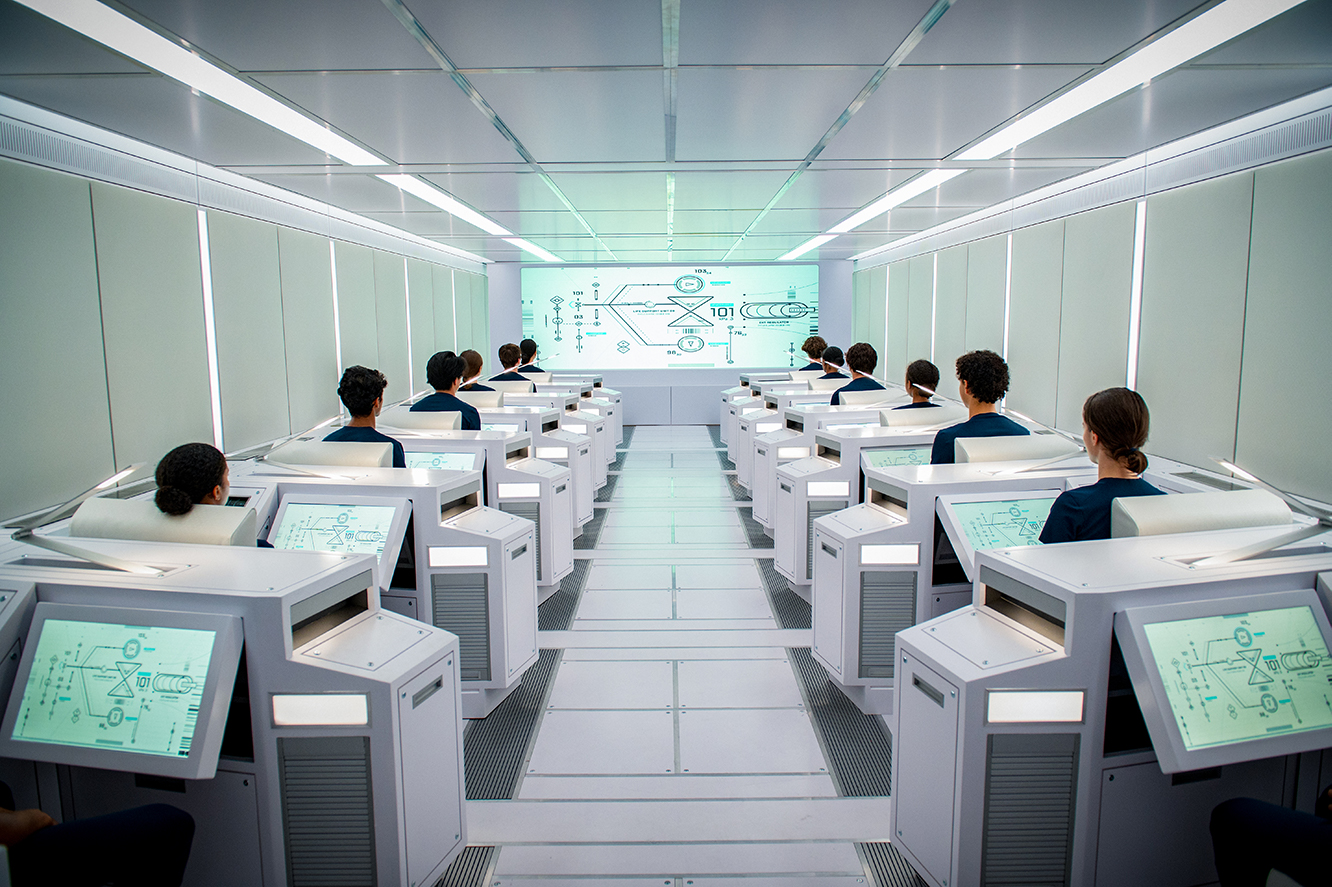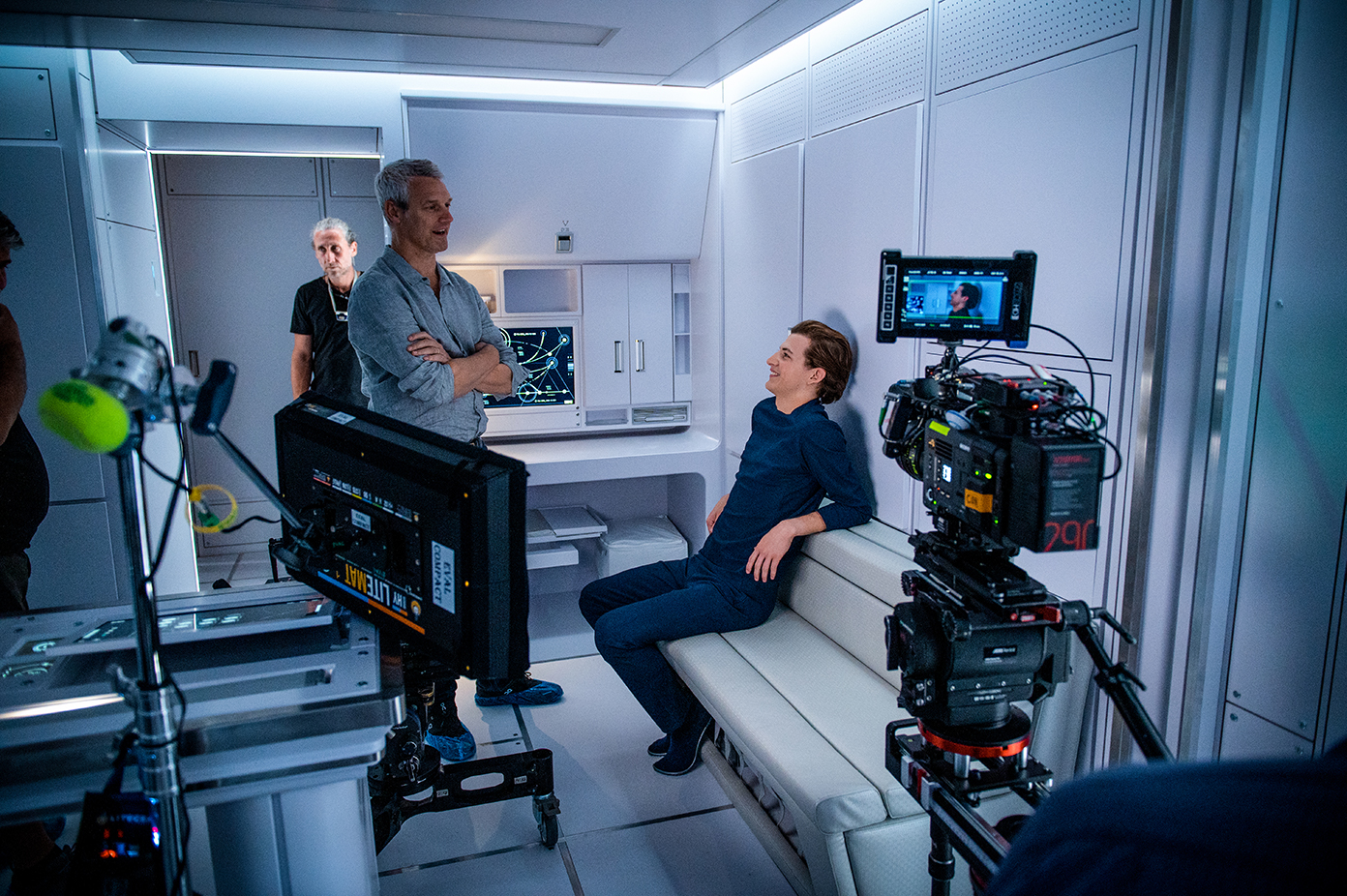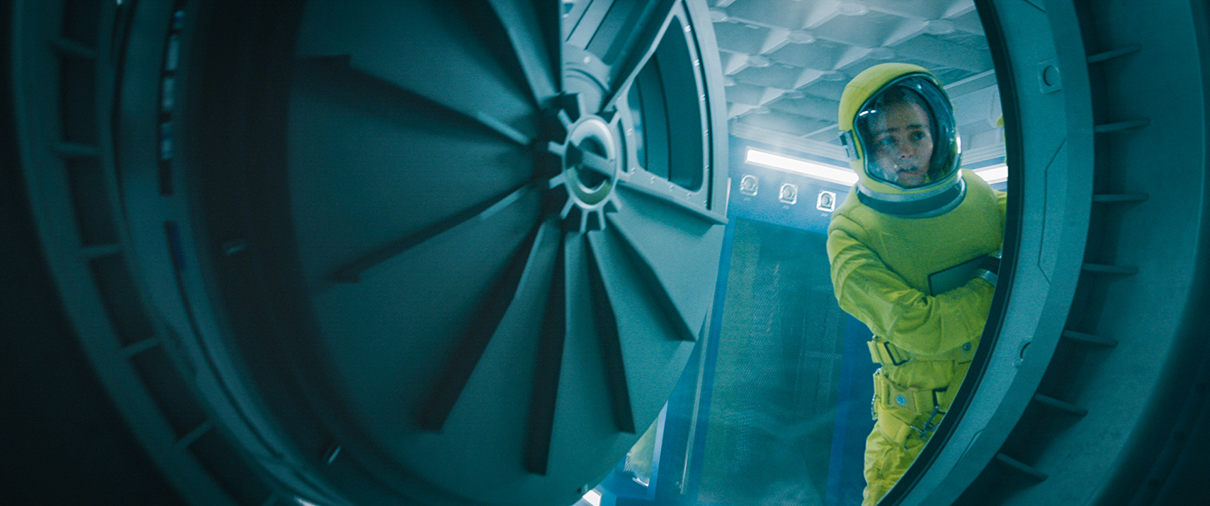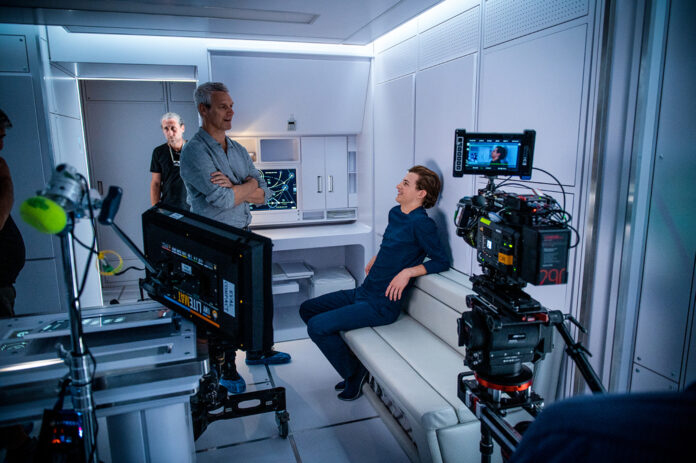With the future of the human race at stake, a group of young men and women, bred for intelligence and obedience, embark on an expedition to colonize a distant planet. But when they uncover disturbing secrets about the mission, they defy their training and begin to explore their most primitive natures. As life on the ship descends into chaos, they’re consumed by fear, lust, and the insatiable hunger for power. The story’s multi-generational mission in search of a new home descends into madness, as the crew reverts to its most primal state, not knowing if the real threat they face is what’s outside the ship or who they’re becoming inside it.
Written and directed by Neil Burger, the film stars Tye Sheridan (The X-Men franchise), Lily-Rose Depp (The King), Fionn Whitehead (Dunkirk ), Chanté Adams (Roxanne, Roxanne), Isaac Hempstead Wright (“Game of Thrones”), Viveik Kalra (Blinded by the Light ), Archie Madekwe (Midsommar), Quintessa Swindell (“Trinkets”), Madison Hu (“Bizaardvark”), and Colin Farrell (The Gentlemen).

Voyagers is an original story, conceived, developed and written by Burger. Burger’s vision for the film was for everything to be based in reality. “VOYAGERS isn’t a fantasy,” he points out. “The spacecraft is purely utilitarian and functional and based on actual proposals within NASA and other organizations studying space travel outside our solar system.”

Burger and his team’s extensive research included a visit to SpaceX, which inspired the stripped down environment of the film’s spacecraft. “The story is about human nature in a vacuum, and the ship is a sterile environment where the young crew almost seem like laboratory rats. We watch to see how they behave under these conditions, how they quickly descend into savagery. And we wonder, is this who we are at our core?”
Burger and Production Designer Scott Chambliss’s key pre-production discussions was that there should be nothing extraneous on the ship. Just enough supplies, food, fuel, to sustain the life of the 30 crew members—the bare minimum. The ship design is just big enough to support them. Any extra weight, any extra room for leisure, for example, would make the ship too heavy to push through space. The intention was to create an environment built to sustain life on a voyage to the next planetary frontier. With Burger’s creative mandates firmly in mind, Chambliss set about designing dozens of modular interiors for the ship. He knew he needed huge soundstages and he found them at Bucharest Film Studios in Romania, home to some of the largest soundstages in Europe. These ambitious builds – labyrinthine combinations of lengthy, inter-connected corridors, living quarters, communal and functional spaces – were constructed to make the cast feel claustrophobic, like they were experiencing interplanetary travel within a spaceship’s confined quarters.
These tight interiors were built to stoke the characters’ isolation, confinement and cabin fever. “For Neil, the conversation was really about submarines,” notes supervising art director Kevin Houlihan. “How do you recreate the very real effects that a tight, confined space takes on the mental state of sailors down below and put that experience in the context of space? That was the true impetus as to where most of these sets came from.”

To capture the entire interior of the spaceship Humanitas on camera, Chambliss dedicated one stage to sets related to living quarters and communal areas and another to more functional spaces — the control room, “farm,” mechanical corridors, and subsystems. While most of the set dressing and equipment on board the Humanitas was sourced or fabricated in house, the content on the plethora of computer monitors appearing throughout the ship was developed by the UK-based motion graphics house Compuhire. As Houlihan explains, “We executed based off all the scripted action so that each time an actor goes to touch the screen, they know what they’re doing. They’ve got an action that they can rehearse with, and the audience can see something that looks different and unique with each interaction.”
Burger, Chambliss, and director of photography Enrique Chediak collaborated closely on how lighting could be used to convey specific moods, emotions, and times of day within the predominantly white spaces of Humanitas , all windowless and devoid of natural light. By embedding approximately 4.5 miles of dimmer-controllable LED lighting on the sets, Chediak had complete control of every light on board and could adjust them all with maximum speed and freedom.
“For Enrique, it’s LED lights, an almost hospital feel, and keeping things very, very bright,” says Iwanyk. “Then, the characters are starting to be stripped away in good and bad ways. Not only does the ship evolve, but the lighting evolves, whether it is bursts of color on sets, the colors of the monitors, or the red lights and the blue lights of danger.” Chediak shot VOYAGERS on Sony VENICE cameras with Zeiss Supreme Prime Lenses and his inventive lighting design and camera movements mirror the emotional arc within this explosive narrative. Burger wanted the sets to feel claustrophobic and clinical, like in a laboratory. But he also wanted to create a sense of exhilaration, exuberance, terror, and fluidity in the camera, in a confined space.
“We were very in sync in terms of how we should attack the visuals of this movie and how the language should evolve,” Chediak says. Burger wanted a long, narrow corridor that was the ship’s central spine and symbolic of the characters alienation and later of their wild abandon. He and Chediak devised an inventive ceiling rig capable of hurtling at 30 miles per hour after the young crew members, as they run for their lives down a 200-foot-long corridor.
“It’s a way to show the character’s passage through time, a way to put pressure on the characters as their fear grows, as well as conveying the escalating chaos on the ship. The set was huge but made up of tight, claustrophobic spaces. We worked with very small cameras where we could squeeze in with the actors and create a feeling of real intimacy and immediacy,” says Burger. “Fear is a big theme in the movie. How it overtakes you, consumes you. The crew lose all rational sense and start to make really bad decisions. And it’s about how some of the crew exploit fear for their own ends, how they fan the flames of it, and then present themselves as the saviors.”
Costume designer Bojana Nikitović crafted identical, laser-cut, midnight blue uniforms out of breathable materials for the crew, all of which allowed the cast to move freely and comfortably during demanding stunt sequences. “Neil was insistent on a very simple form from the beginning and it really works because the concept is that these young people were dressed like that, almost from birth,” Nikitović says. “Everyone they know is dressed exactly the same, so it was just a matter of variations of the same uniform, whether short sleeves or long sleeves, or for the fitness compartment.”
Fionn Whitehead found that the generic uniformity of these costumes, coupled with the sterility of the claustrophobia-inducing sets, gained him easier access to Zac’s dark and mercurial mindset. “It strips away any character you might have, that you might bring with you, and I think that’s really useful,” he says.
Nikitović also worked with veteran costume effects designer Pierre Bohanna (Black Widow, Wonder Woman 1984) on the design and manufacture of the flight or EVA (Extravehicular Activity) suits for the first generation of children shuttled from earth to the main voyager ship; the luminous neon yellow ones donned by Richard and Christopher as they mend a junction box outside the ship; and those worn by Christopher and Sela in the climactic scene set in the ship’s airlock. Burger wanted to create a primal style of fighting unique to people who have never felt aggression or been exposed to violence via films, television, or videogames. He studied research film of monkeys and apes battling and worked with renowned stunt coordinator Jordi Casares (Jack Ryan ) to design a brutal fighting method. Burger wanted these violent encounters to seem similarly natural and unchoreographed. Casares also oversaw the coordination of the airlock sequence, and Humanitas featured removable ceiling pieces to accommodate the stunt players on wires and cables.
Sci-fi Thriller film Voyagers was released on April 9, 2021.


